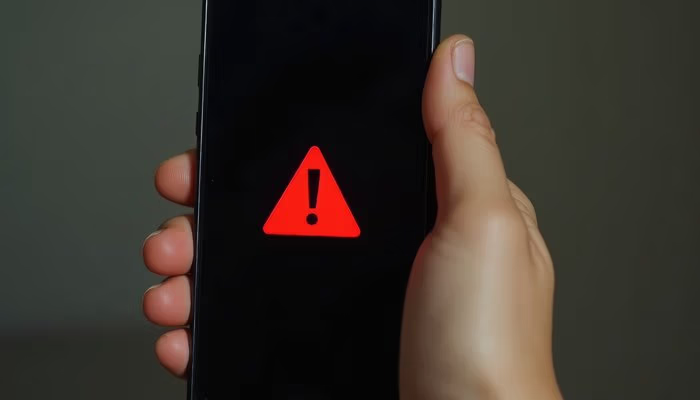Summary: Field teams often face connectivity blackouts in basements, tunnels or offshore environments where standard apps fail and critical test data is lost. Offline commissioning software solves this by storing data locally, allowing technicians to complete inspections and sync later without losing work. This article explains what makes a truly offline-ready tool for commissioning, how to test its real-world resilience and which features are essential, including secure local databases, smart sync engines and MDM-compatible deployment. It also provides insights into pricing models, ROI calculations and practical rollout strategies to support smooth implementation in the field.
Introduction
Picture this: you’re three levels underground in a parking garage, toggling your screen from green bars to an ominous “No Signal”, and the app that holds your punch list goes mute. You exhale, watching test results evaporate. You’re not alone – about 50 professionals a month search “mobile commissioning software,” and 15 look up “offline commissioning app” pleading for a solution. One engineer’s Reddit post sums it up: “Lost half my pressure tests in the basement. Any app that actually holds data offline?” It reverberated through many comments and dozens of shared tales.
This glitch isn’t just annoying, it bleeds time and dollars. At $80 an hour for skilled field technicians, every minute spent untangling sync errors chips away at profits. And with Google Ads Cost-Per-Click creeping past $3 for field-ready tools, the stakes are high: a reliable offline solution can become your secret advantage. In this guide, we’ll pull back the curtain on what makes offline commissioning software essential, how to torture-test its resilience, and what to look for in features, pricing, and deployment.
We’ll begin by dissecting the core concept: what sets offline-first tools apart. Then we’ll gear you up with the ultimate feature checklist: from encrypted local vaults to priority queues that push safety checks first. You’ll uncover tactics to conquer flaky connections, learn quick ROI calculations, and discover deployment rituals that minimize field hiccups. Ready to wipe out “lost data” nightmares? Let’s start.
Struggling with missing data and delays on site?
Our commissioning software keeps everything in sync – online and offline.
What Is Offline Commissioning Software?
Think of your commissioning workflow as a hiking trek where the trail map is your field app. A standard GPS only works when it grabs satellites; when you plunge into tree-lined valleys, you’re blind without offline maps to manage your route. Offline commissioning software is that map downloaded in advance, complete with all waypoints, test protocols, and annotations, so you can traverse connectivity voids without losing your bearings.
Industry buzz matches the demand: searches for “field commissioning software” (20/month) and “offline commissioning app” (15/month) underscore a universal pain. A LinkedIn commentator quipped, “Running HVAC tests in a basement with zero bars felt like spelunking in tech.” In response, Delta Oil rigged 25 tablets with an offline-first application. Even deep inside offshore structures, technicians logged 150 tests daily. Once back online, merge conflicts stood at under 5%, cutting reconciliation time by 70%.
Pro Tip: Lock your device into airplane mode for an entire shift during your pilot. Contrast what the app retains versus what disappears: insist on manual conflict alerts rather than silent overwrites.
Must-Have Field-Ready Features
A true field tool is your Swiss Army knife, primed for rugged conditions. Here’s what it needs:
- Secure Local Vaults: Data lands in an encrypted database (SQLite or Realm) that survives crashes and power cycles. Think AES-256 armored.
- Smart Sync Engine: Edits from multiple techs don’t clash—they queue side by side, spotlight differences, and let you pick the correct version.
- Differential Data Packets: Don’t gulp a full file, send only the changed bits. Sierra Construction’s tunnel drill saw packet sizes drop by 75%, syncing key logs in under 90 seconds.
- Priority Transfer Queues: Tag life-safety checks for VIP treatment: sync them first, and push photo-heavy logs later when bandwidth frees up.
Quick Fact: Less than a quarter of top vendor sites even mention offline encryption. Make it the first line on your checklist.
Tackling Connectivity & Sync Challenges
Nothing feels worse than a sync bar stuck at 0%, like a car spinning wheels in mud. Top-notch tools use exponential backoff, each retry waits longer, preventing server overload when devices flood back.
- Background Retry Loops: No button pressing required; the app continually retries in the background, showing a progress bar instead of a frozen screen.
- Visual Error Board: A traffic-light dashboard flags failed, retrying, and successful records so you know exactly where your data sits.
- Developer Playbook: Endpoint examples (PATCH /projects/{id}/sync with JSON diffs) empower your dev team to build custom checks and integrate with CI/CD pipelines.
Pro Tip: During your sync trial, simulate a “flight deck” scenario: total radio silence, write ten new forms, then reconnect. Measure how many seconds it takes to reconcile 5MB of data, aim for under two minutes.
Pricing, ROI & Hidden Offline Costs
Offline modules sometimes feel like hidden attachments on a rental. You agree to a base rate, then – bam – a surcharge for offline sync. Here’s the breakdown:
- Base + Offline Add-On: $65-$85/user/month.
- Per-Project Licenses: $1.2k-$1.8k for a 30-day offline window.
- Enterprise Seats: Flat annual fees, negotiate offline and analytics bundles up front.
ROI Example: If your team saves 3 hours weekly in reconciliation, at $80/hr that’s $12,000 yearly. Subtract 10 users × $75 × 12 = $9,000. You net $3,000, proof that reliable offline pays.
Quick Fact: Only 10% of vendor sites outline offline fees. Always demand a full Total Cost of Ownership breakdown, refusal equals red flag.
Not all commissioning tools are created equal – check our commissioning software list to compare.
Integration & Deployment Best Practices
Your rollout should be more ballet than brawl:
- Compatibility Matrix: Vet every OS version, screen size, and accessory – barcode scanners, thermal cameras, Bluetooth gauges.
- OTA MDM Updates: Leverage platforms like Intune or Jamf to push fixes overnight; no frantic on-site scrambles.
- Disaster-Recovery Dress Rehearsal: Deliberately corrupt an offline record, then restore it. If your tool can’t self-heal, it’s not ready for prime time.
Actionable Tip: Start your first full deployment on low-stakes assets. Validate end-to-end flows before exposing critical projects.
Key Takeaways
- Field teams never lose data: log tests offline and merge automatically when you reconnect.
- Stress-test any tool with “no-signal” trials, your drill-down on merge conflicts and sync recovery defines reliability.
- Must-haves include secure on-device vaults, smart differential sync, and fast-track queues for critical checks.
- A transparent cost sheet covering offline modules keeps your budget intact, no nasty surprises.
- Rolling out updates via MDM and rehearsing disaster-aversion drills makes real-world deployments smooth.
Next Steps
Offline commissioning software puts an end to “lost punch list” nightmares. By locking data locally, syncing intelligently, and prioritizing vital checks, it turns weak connectivity into a footnote. Run rigorous offline trials – airplane mode, backoff drills, and recovery rehearsals to weed out hype. Pair that with crystal-clear cost sheets and MDM-based rollouts, and your field tests stay on track.
Data integrity shouldn’t depend on signal strength.
See how flowdit keeps your commissioning checklists safe, no matter where you are. It works offline, so you don’t have to.
Take a 5-minute tour:
👉 flowdit.com
Image: Adobe Stock – Copyright: © ArtificialHorizons – stock.adobe.com




